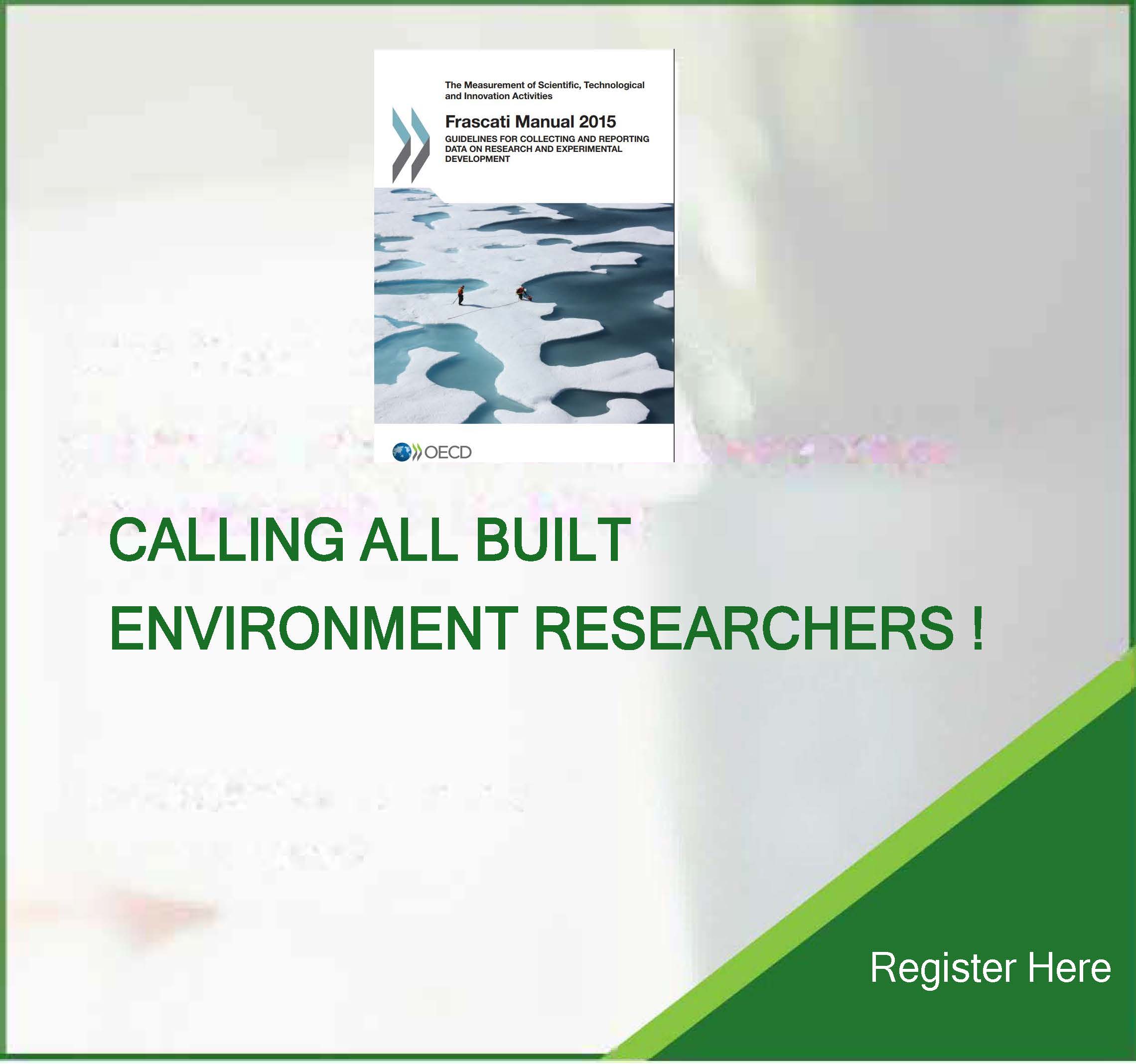
CIB has been alerted to an important matter which affects the categorisation and funding of research in the built environment. The President and Chief Executive believe we should address this through a campaign by CIB and its Members, Working Commissions and Task Groups, and welcome your views and support.
Who is affected?
The issue is pertinent to researchers in universities or research and technology organisations, particularly those working in the fields of architecture, landscape architecture, interior architecture/design, urban design, urbanism, construction management, quantity surveying, property/real estate, and planning (as a spatial discipline) and other built environment disciplines. It also affects professional bodies and many technical journals and funding agencies.
Call to action
At the end of this note you are invited to click here to register your interest in supporting this campaign and to pass on any comments. Our next stage will be to convene a meeting to share views and agree a plan of action. This notice has been sent to all CIB Members, CIB Working Commissions and Task Groups, and editors of CIB’s Partner Journals. Please feel free to pass this notice to colleagues and others who you feel should be engaged at this early stage.
The problem
The matter came to our attention when in South Africa, the national Departments of Higher Education and Training, and Science and Innovation, removed the category of Architecture and the Built Environment from their research outputs databases to align with the Fields of Research and Development (FORD) identified in the OECD Frascati Manual. This means that researchers cannot capture their research outputs, unless they put it under a sub-category hidden in the miscellaneous sections of Engineering or Humanities or Social Sciences (depending on the discipline or research project). The effective expunging of the many different professions which fall under Architecture and the Built Environment as valid research fields has implications for all researchers working in this field in terms of accessing research funding, as well as in the setting of research priorities by institutions and national and international research funding entities. All of which marginalises a field which has a direct impact on human well-being, the UN Sustainable Development Goals, and the economy.
Whilst originating in South Africa, we believe this is a global issue as we are aware of many other funding bodies adopting the Frascati framework or some variation of it.
OECD Frascati Manual
The situation arises because the national bodies overseeing the capturing and reporting of research outputs are aligned to the categories in the OECD manual for collecting and reporting data on research and experimental development, as described on page 59 of the Frascati Manual (see https://www.oecd.org/sti/inno/frascati-manual.htm). They indicate they have done this to align more with international standards and to allow international comparisons.
The Frascati Manual identifies the main research categories used to collect data on research activities. “This manual is intended to guide practical data collection and reporting efforts through a common vocabulary, agreed principles and practical conventions. These are aimed at ensuring the comparability of statistical outputs to support the build-up of a global statistical information infrastructure on R&D that has relevance for policy makers, academics, industry managers, journalists and the public at large.” (p.38).
The manual also describes what is R&D and what is not and proposes “the use of the OECD Fields of Research and Development (FORD) classification for such purposes. This classification, developed for R&D measurement purposes, follows primarily a content approach. Where the content of the R&D subject matter is closely related, subjects are grouped together to form the broad (one-digit) and narrower (two-digit) fields of the classification.” You can read how they define categories/research fields on page 58 of the manual and the research fields on page 59 (see also attached table). Importantly, they do leave room for revision and new domains.
Crucially, at the moment there is no category for Architecture and the Built Environment. This means that institutions capturing research output and activities must squeeze research in this field into sub-categories of “Other” in the fields of Engineering, Management or Social Sciences. This hides the real research contribution by the Built Environment disciplines – many of whom are active in the CIB. Many organisations also use these categories when they constitute evaluation panels for research funding proposals, which can mean that a research proposal is evaluated by a panel that has little or no grounding in the discipline (e.g., occupational health or well-being proposals are considered by a medical panel). It also means that the true impact of research in this field remains hidden as it is diluted among a number of research categories.
CIB action
In discussion, CIB President and Chief Executive feel that CIB should make the case for the OECD and research funders globally that Architecture and Built Environment constitutes a broad and recognised field of often transdisciplinary research and that it should be recognised as such by creating a new main research field.
Next steps
Please click here to register your interest in supporting this campaign and to pass on any comments and views on the issue. Our next stage will be to convene a meeting to share views and agree a plan of action, which may feature the following:
- Members, Commissions and Task Groups affected
- Other external allies? (eg journals, professional bodies)
- Audiences (OECD, research funding bodies around the world)
- Key messages
- Outputs (eg press releases, letters, a session at the World Building Congress in June 2022)
Please also pass this notice to colleagues and others who you feel should be engaged at this early stage.
For queries on the content of this note please contact Don Ward in the first instance.
Keith Hampson Don Ward
CIB President CIB Chief Executive
November 2021


